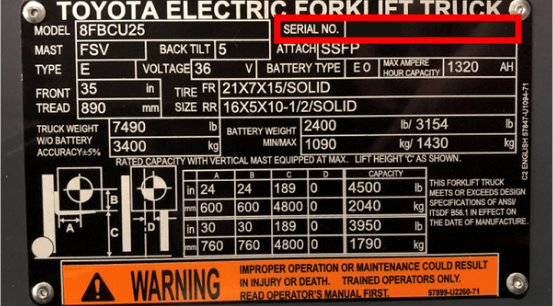Concrete Floors And Forklifts: From Damage Impacts To Friction

Using forklifts effectively in any application requires assessing how they will work in concert with the other elements of your facility. From understanding your dock capabilities to making sure pallet racks and forklifts match up appropriately, a successful facility takes into account every touchpoint of forklifts in use.
An easy to overlook touchpoint that requires attention is facility flooring. Too often, operations that use forklifts experience unexpected damage to both product and equipment because floors become damaged. In this post, I’ll discuss some of the impacts of damaged floors on equipment and personnel, help identify some trouble areas on concrete floors, and discuss possible solutions to damaged flooring.
Concrete Floors And Forklift Ergonomics
The thing about forklifts? They’re aren’t equipped with the suspension system of a luxury SUV. When you roll over a bump while driving a forklift, you’re going to feel it. And while Toyota forklifts are ergonomically designed for operators’ optimal comfort, a floor that’s fallen into disrepair will place stress and strain on an operators’ body. Maintaining a floor inspection schedule is key to preventing damage. But if you’re an operator and you see or feel floor damage, make sure your report it.
Concrete Floors And Forklift Or Product Damage
Most forklifts that operate indoors will have cushion tires, and cushion tires are not manufactured to withstand uneven terrain. Uneven terrain includes flooring surfaces where chunks of floor are missing or general rough patches are present. When you continually drive cushion tires on a damaged floor, you’re likely to shorten the intervals between necessary tire replacement, placing strain on the forklift and on your budget.
Damaged floors might also be hazardous for the products you’re moving. Not only will driving over damaged floors cause less than optimal work conditions for your operators, it increases the risk of product spills if items fall from pallets due to traveling over the uneven terrain. Even something as seemingly negligible as increased vibration of products on a pallet can damage certain types of materials. Making sure your floors receive optimal care helps protect your investment in the product.
An even bigger investment might be your forklifts; those capital investments need protection, too. Forklifts are designed to have a low center of gravity, so there are many points on a forklift such as under the mast and chassis where under clearance is minimal. If a clearance assessment was made prior to acquiring the forklift, this may have been done prior to any flooring damage. Should floors later become damaged, you might not have the necessary clearance, potentially increasing impacts on the forklift. Such sudden impacts caused by poor flooring conditions can also damage internal forklift components over time, potentially causing a forklift to become unstable.
Concrete Floors Inspection Tip: Check The Joints
Performing a regular visual inspection of your floors is highly recommended. One main problem area that requires frequent inspection are the joints between concrete slabs. Because these are inherent weak points in the floor and receive pull away pressure from the weight of forklifts, they are likely to be the first places that fall into disrepair from natural wear and tear. Replacing concrete joints when they become damaged might seem like a costly investment. However, the long-term ROI of less forklift repair and more efficient operations makes the investment worthwhile.
Concrete Floors And Friction
The condition of your concrete floors goes even beyond the damage that they undergo due to wear and tear. You must also consider how friction plays a role in several critical forklift functions. When floors are wet or slick due to spills or chemicals that are used, it reduces the friction of the tire surface with the ground. This can have a significant impact on a forklift’s ability to stop or accelerate effectively, which can be an eminent safety hazard. It is imperative that floor surfaces are cleaned properly and allowed to dry before attempting to drive over them. Ensuring that the floor is also free of debris and any obstructions will help to avoid potentially unsafe driving situations. Be sure to thoroughly read and understand your forklift’s operator manual for more information regarding proper floor conditions for your particular piece of equipment.
Whatever you plan strategically to make sure your floors stay in top condition, having an inspection plan in place is key to success. Material handling investments work hand in hand with facility investments, right from the ground up.


